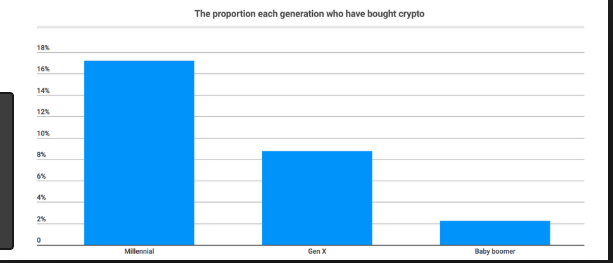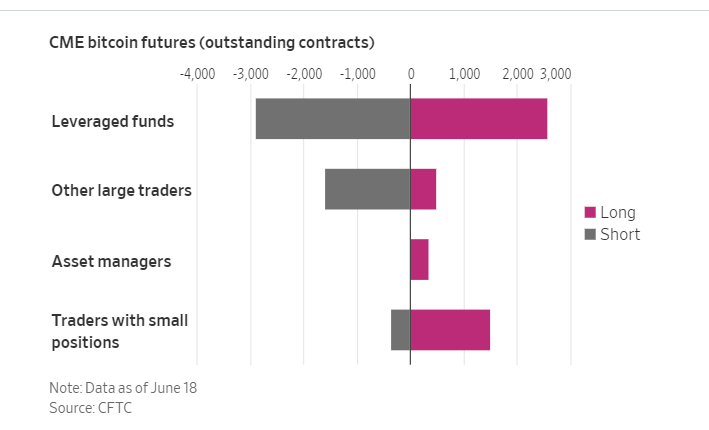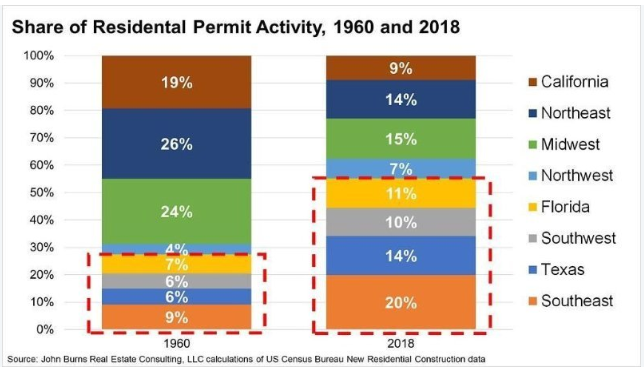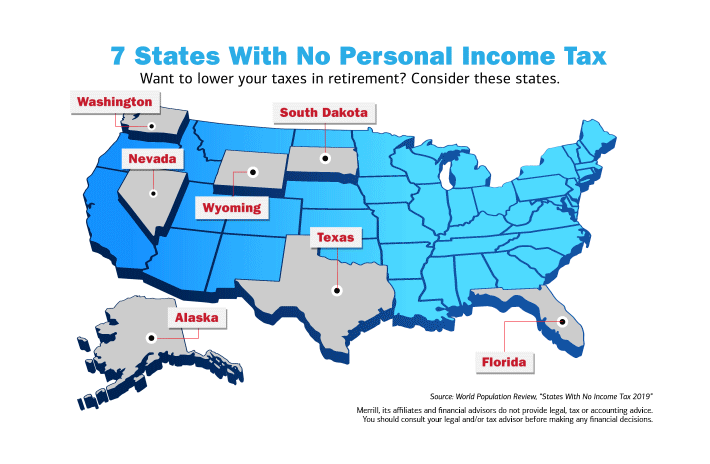1.Inflation Rolls Back Over….$11 Trillion Globally in Negative Yielding Bonds and Still No Inflation.

The risk of too little inflation
Written by Russ Koesterich, CFA Low inflation may sound appealing, but as Russ explains, it has drawbacks for investors.
By any account the U.S. equity market is having a stellar year. Stocks have benefited from easier financial conditions, which have in turn pushed up market multiples. By a happy coincidence, gains in market multiples have exactly matched the 15% gain in the S&P 500 Index.
But while stocks have benefited from cheap money and higher multiples, they have more recently been constrained by concerns over growth. The challenge is that the same slowdown that led the Federal Reserve to pivot and stop raising rates also puts earnings at risk. Recent developments in the inflation-linked bond market (i.e., Treasury Inflation Protected Securities, or TIPS) suggest that investors are right to be a bit more cautious.
Inflation expectations embedded in the TIPS market are signaling that already low inflation will fall even lower. In late April, the 10-year TIPS breakeven (BE), i.e. the amount of inflation TIPS investors expect during the next decade, was about 1.95%. Today, the 10-year BE is below 1.70%. The outlook for the next five years is even softer, roughly 1.50%. And while inflation expectations are higher using different market measures, such as inflation swaps, the direction is still down (see Chart 1).
https://www.blackrockblog.com/2019/06/25/the-risk-of-too-little-inflation/
2.We are Past 30 Days Inverted Yield Curve Now Watching Quarterly

From The Daily Shot
https://blogs.wsj.com/dailyshot/
3.Traders are pricing in a 100% chance of at least one Fed rate cut in July
PUBLISHED WED, JUN 19 2019 4:02 PM EDTUPDATED THU, JUN 20 2019 7:31 AM EDT
KEY POINTS
- -The fed funds futures market is now pointing to a 100% chance of an easing of monetary policy next month.
- -The Fed decided to keep the benchmark rate in a target range of 2.25% to 2.5% Wednesday.
- -Fed chair Jerome Powell said the case for more accommodative policy has strengthened.
Traders are convinced the Federal Reserve will cut rates next month.
The fed funds futures market is now pointing to a 100% chance of an easing of monetary policy next month — a 64% chance of one rate cut to 2% to 2.25% range and a 36% probability of two cuts, according to the CME FedWatch tool. The tool is based on futures pricing from live markets and reflect the views of traders placing real bets on the CME exchange.
The Fed decided to keep the benchmark rate in a target range of 2.25% to 2.5% Wednesday. The Fed’s so-called dot plot shows that policy makers are divided for the remainder of this year, with eight members favoring one cut this year while the same number voted in favor of the status quo and one still wants a rate hike.
Along with that forecast, comments from Fed’s Powell and a tweak to the central bank’s statement caused traders to increase bets a cut is coming. Fed chair Jerome Powell said at a press conference Wednesday the case for more accommodative policy has strengthened, adding that policymakers are concerned about some of the recent economic developments. And the Fed dropped the word “patient” from its statement.
“The Fed has clearly opened the door to a rate cut,” said Robin Anderson, senior economist at Principal Financial Group. “The Fed is going to do what it can to maintain the current economic expansion, and the shift in language used in today’s statement makes it clear that we’ll see at least one rate cut this year, potentially two.”
Before the Fed announcement on Wednesday, traders were pricing in a 16% chance that the central bank would keep the rates unchanged in July, while seeing a 65% chance of one cut and a 19% chance of two cuts next month.
4.Bond ETFs Double Assets in One Year.

Bond ETFs are booming – basically every category has recorded double-digit growth in average weekly volumes between last year and 2019.
From Dave Lutz at Jones Trading.
5.Lots of China Bank News Out Overnight…Too Much to Cover Today.
MSCI China no legs…

6.Bitcoin Explodes 20% Overnight, Rises Just Shy Of $13,000 And Everyone Wants To Know Why
by Tyler Durden
TwitterFacebookRedditEmailPrint
After breaching $10K over the weekend for the first time since March 2018, bitcoin has accelerated its sharp move higher and, trading close to $13,000 on Wednesday, up almost 20% in the past 24 hours. It is now up 240% since the start of the year, and even though it remains below its all-time high of nearly $20,000, at the current pace, it will surpass its all time high in just a few days.

The last time Bitcoin rose above $12,000 was in December 2017, when it continued to rally, on some days moving several thousand dollars inhours, eventually reaching its all time high as $19,511 just before Christmas 2017. That surge, however, was followed by a calamitous drop as retail investors fled, with the crypto dropping below $6,000 by February, and hitting $3000 just months later. All in all, in December 2017 and January 2018, Bitcoin spent about six weeks above $12,000.

7.Bitcoin Millennials Vs. Hedge Fund Shorts

https://icomaking.com/how-many-people-own-cryptocurrency/

Is There a Big Short in Bitcoin?
Trading activity has grown in CME’s bitcoin futures in recent months, along with the rebound in the cryptocurrency’s price
https://www.wsj.com/articles/is-there-a-big-short-in-bitcoin-11561464005?mod=itp_wsj&ru=yahoo
8.What States is Household Growth Shifting to….
Construction activity provides a great illustration of where household growth has shifted over time. The Southwest, Texas, Florida and the Southeast are 55% of residential building permits today, compared to just 27% in 1960. John Burns Real Estate Consulting hashtag#JBRECDailyInsight
Chris Porter

9.7 States with No Personal Income Tax.

Your cost of living could be higher in a low-tax state. “You can’t look at relocating in a tax vacuum,” notes Navani. Look at the overall prices in the area where you’re considering relocating: everything from utilities to groceries to health-care costs.
Low-tax states can make up for lost revenue in other ways that could impact your budget. Several of the states without an individual income tax compensate by implementing higher state sales or other taxes, including taxes on necessities such as gasoline, or charging more for state services such as driver’s licenses or car registrations. Those hidden costs could have a real impact on your budget.
“One way to get a clearer idea of the tax implications of relocating is to ask your tax professional to run a projection of what your tax picture might look like in the new location,” Navani suggests.
In addition to consulting a tax expert, be sure to consult with your financial advisor for help in managing the costs of relocating, as well as your bigger financial picture, Hunter adds. “Speaking with an advisor can help give you a sense of how your expenses and income could shape your lifestyle if you decide to move.”
10.A Toxic Work Culture Is Forcing High-Performing People to Quit
Tim Denning
If micro-management thrives and there is no trust in your organization, you are looking down the barrel of a toxic work culture. If you don’t believe me, use one of the many employee engagement products to find out for yourself.
Tell the people in your company that you are going to be surveying them every three months and they can say whatever they want because it’s completely anonymous. After the first survey, watch the comments and feedback pour in. Keep encouraging your people to say what they think.
Toxic work cultures make going to work feel miserable.
In a toxic culture, new ideas can’t thrive, people can’t be honest, bullying unfortunately occurs, leaders are given power that can go to their heads and fuel their egos, and an eerie feeling occurs at your company’s town hall/all hands when leaders ask for questions.
High performers quit toxic work cultures. Every day on platforms such as LinkedIn, high performers are getting messages from recruiters and competitors who are selling the dream that the grass is greener. If your company has a toxic work culture, high performers have nothing to lose by moving on and trying another company.
High performers know their strengths and are also smart enough to realize that if they can perform well in a toxic work culture, they can thrive in a Culture First company that looks after its employees.
If your high performers look disengaged or show little enthusiasm, that is a red flag that your organization is toxic.
Here is what a toxic work culture looks like from someone who has worked in one:
People can’t make decisions
Basic decisions that can cause customers to leave, can’t be made. A simple refund for a client that never received the service they paid for takes weeks when it should take minutes.
When a decision needs to be made to change a product because customers are leaving by the dozen, a decision can’t be made. It’s easier to make no decision than it is to make a decision that admits things need to change.
Working from home or part-time work is seen as lazy
Management doesn’t allow people to work from home because they want to watch people. Working from home means you’ll be less productive and take advantage of the situation.
The fact you might have a newborn baby at home and don’t want to do the two-hour commute each day so you can work more is ignored.
Then, staff who want to work part-time because they have a side hustle, children, or a second job are prevented from doing so or referred to as “lazy.”
Here’s the thing: part-time work and working from home is not lazy.
Both forms of work allow people to have lives and they will reward you (if you allow them) with loyalty and commitment to their work.
Excluding part-time work or working from home is limiting your talent pool severely because it is such a common way of working. Being chained to a desk in an office does not make you high performing or a profitable asset; being allowed to be flexible and treated like a human does.
Entrepreneurship is frowned upon
Toxic work cultures hate entrepreneurs and intrapreneurs because they are scared to death that they are going to leave and steal their ideas.
Thriving work cultures take people that have experience owning a business and utilize them like their secret weapon. They promote entrepreneurship because they want people to feel as though it is their business and they can make decisions.
Utilize entrepreneurs while you have them, and if they, leave wish them all the best. Entrepreneurs are the reason that businesses are created in the first place — remember that.
“MANAGEMENT vs. US” culture
Leaders are referred to as management and the front line staff are told that the company is cutting costs.
Meanwhile, the leaders are having deliciously catered for meals off silver plates, taking black limos to meetings and spending crazy amounts of money on social media marketing that makes them look good.
Front line staff say things such as “Management really needs to look at problem X.”
In a non-toxic culture, management and staff are one and people are accountable. Sentences like “Management needs to do…” are not relevant because staff can make decisions and the two sides of the business are one.
The less hierarchy, the more people feel included and that produces are thriving, collaborative culture.
The number of hours you work matter
Judging people by when they start work and how late they work is irrelevant. We all know that the number of hours we work has nothing to do with output.
You can be at your desk for 12-hours straight and be doing nothing other than surfing the web and complaining to your pals about the company you work for.
Culture First companies understand that output produces results and that on some days you will be productive, and on other days you may have suffered the loss of a loved one or be feeling unwell. Regardless, all that is taken into account is results.
And here’s the kicker: when the results are not there, leaders take accountability and coach their people out of it or help them get a role they are better suited for.
If leaders are watching the clock, you have a problem.
Preferential treatment
In-between the formal layers of hierarchy, there are these soft spongy bits called “preferential treatment.”
These are people that are given extra privileges for enforcing the leaderships toxic culture and talking behind people’s backs in order to gain something. Instead of being part of the solution, they make the problem bigger and are rewarded for it.
Talking down to people who have found themselves in the wrong role
People who are under-performing are called all sorts of nasty names and treated unfairly. They are seen as stupid or not good at business.
In thriving cultures, these people are helped, coached and given feedback.Leaders stand up and help them find the right role if it turns out; for example, they applied for sales and don’t really enjoy talking to customers.
People in the wrong roles can be some of the best staff you have in your business if you can be compassionate enough to give them a second chance in a different role.
The appreciation that comes from being helped rather than shamed converts into long-term loyalty that rebuilds careers, and becomes the basis of a thriving culture.
Shaming low performance
If there are punishments for low performance, you have a big problem.
Shaming people won’t make them perform better; it will make them hate the leadership team and the company even more.
This hatred will then be directed towards your customers and you’ll have more of those “Why are we not making money?” meetings when really it’s your culture that sucks.
A rotating door policy
When people decide to leave or mention they are thinking of leaving, they are talked about as traitors.
Having people leave regularly is normal and acceptable in toxic work environments. There are no exit interviews or questions around why a particular leader has had so many people leave in a short space of time.
Each time, the excuse is “Johnny was crap, so it’s a good thing he is leaving.”
When you scour the company’s staff on LinkedIn, you see that staff don’t last long at the company.
Asking staff to write positive reviews online to cover up the toxicity
Yes, it happens. Toxic cultures can easily be recognized by former staff leaving negative reviews on places such as GlassDoor.
In a toxic work culture, business leaders panic and try to cover up the error in their leadership by asking staff to leave fluffy, fake, in-genuine reviews online to cover up the bad ones.
You can’t hide a toxic work culture; you can only fix it by recognizing it and changing how you treat people.
Values are spoken of rarely
They are written on the company website, mentioned at the annual conference, but never talked about in the context of everyday work.
When talking to a client or making a decision, the values are forgotten about.
In a thriving culture, you can’t even get hired unless you can demonstrate the values. The references you provide are asked about values, you are required to provide evidence and you may even be asked to do a case study where the values will be assessed.
At the end of the year when performance reviews are had, profit and revenue is only one small part of the conversation. Leaders focus in on the company values because they know that it’s the glue that holds everything together and ultimately produces revenue.
SOLUTION: It starts at the top
- Start with trusting people first
- Earn people’s respect
- Be compassionate to your people’s circumstances
- Give your people development opportunities
- Respect the way people like to get their work done
- Encourage autonomy of decision-making
- Let people be themselves (race, religion, sexual preference, gender, background — who cares)
https://www.linkedin.com/pulse/toxic-work-culture-forcing-high-performing-people-quit-tim-denning/
Final thought
Toxic cultures cause share prices to drop and profits to plummet. Instead of looking at spreadsheets and accountants for answers, look at your people. Your people are what cause profits to go up or down.
Identify the problems of your company’s culture, own them, and then become obsessed with asking your people how you can change them. Then, implement the changes.
Fight toxic work cultures by making your company transform into being Culture First. It starts with people.
If you want to increase your productivity and learn some more valuable life hacks, then join my private mailing list on timdenning.net
https://www.linkedin.com/pulse/toxic-work-culture-forcing-high-performing-people-quit-tim-denning/